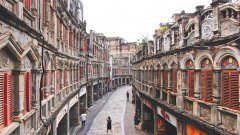Facelift of China's major museum to raise bronze chariots above ground
XI'AN, April 15 (Xinhua) -- One of the country's most important museums will raise bronze chariots, which belonged to China's first emperor, from a subterranean showroom to a new exhibition hall above ground.
Emperor Qinshihuang's Mausoleum Museum, home to the 2,000-year-old terracotta warriors, will undergo an overhaul this year to accommodate the surge of visitors to the site, said Zhou Kuiying, deputy director of Shaanxi Provincial Administration of Cultural Heritage.
Zhou said one of the highlights is the construction of a new exhibition hall for the bronze horse-drawn chariots, which are displayed in a small underground room that is very cramped during high season.
The timeline and other details of the renovation work have not yet been disclosed.
Qinshihuang, China's first emperor, is remembered for unifying the country and building the Great Wall. He had an entire army of clay warriors and horses created to help him rule in the afterlife when he died in 210 B.C.
The terracotta army around Qinshihuang's mausoleum is one of the greatest archeological finds of modern times. It was discovered in Lintong County, 35 km east of Xi'an, in 1974 by farmers who were digging a well.
The mausoleum was later declared a National Heritage site and a World Heritage site.
The museum received about 2 million visitors annually before 2012 but this jumped to 5 million in 2013 and has continued to rise. In 2016, 5.6 million people visited the museum.















